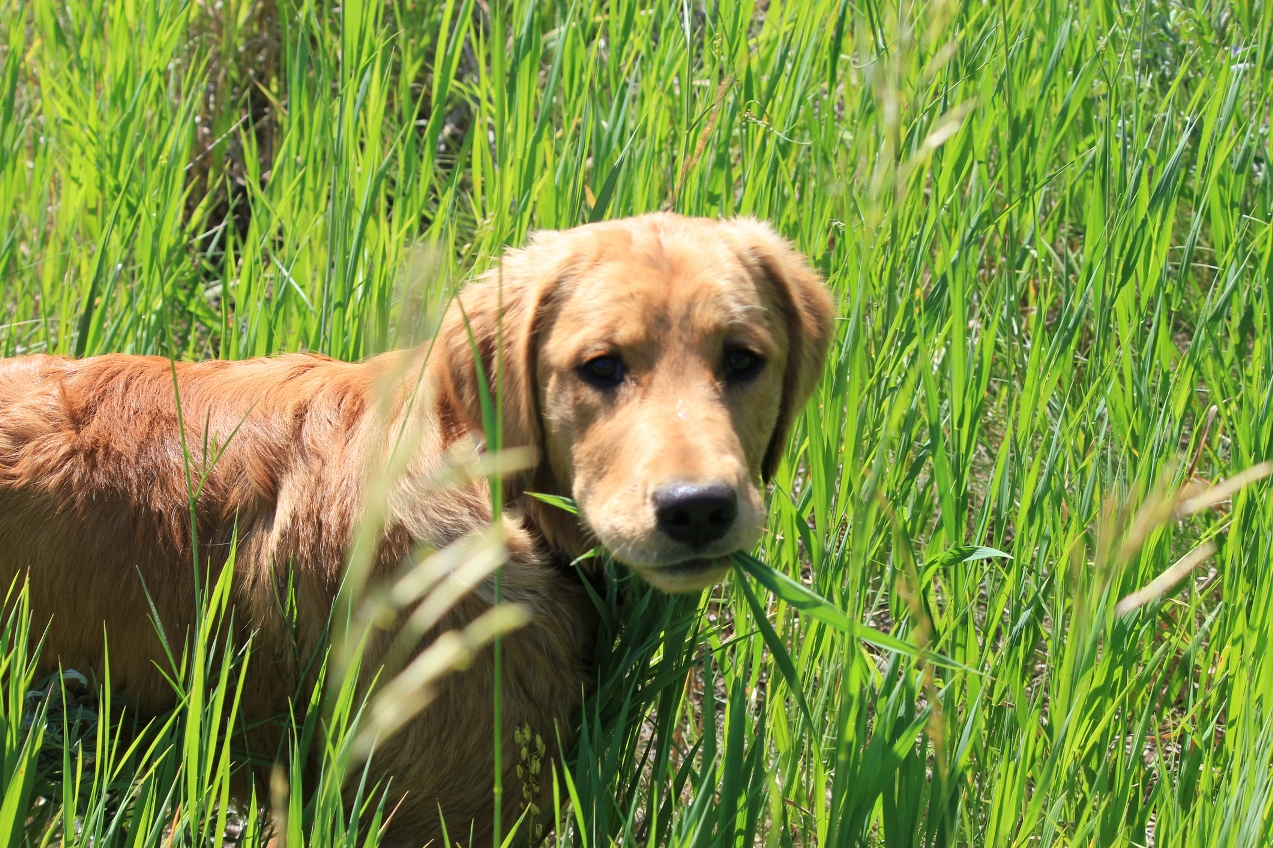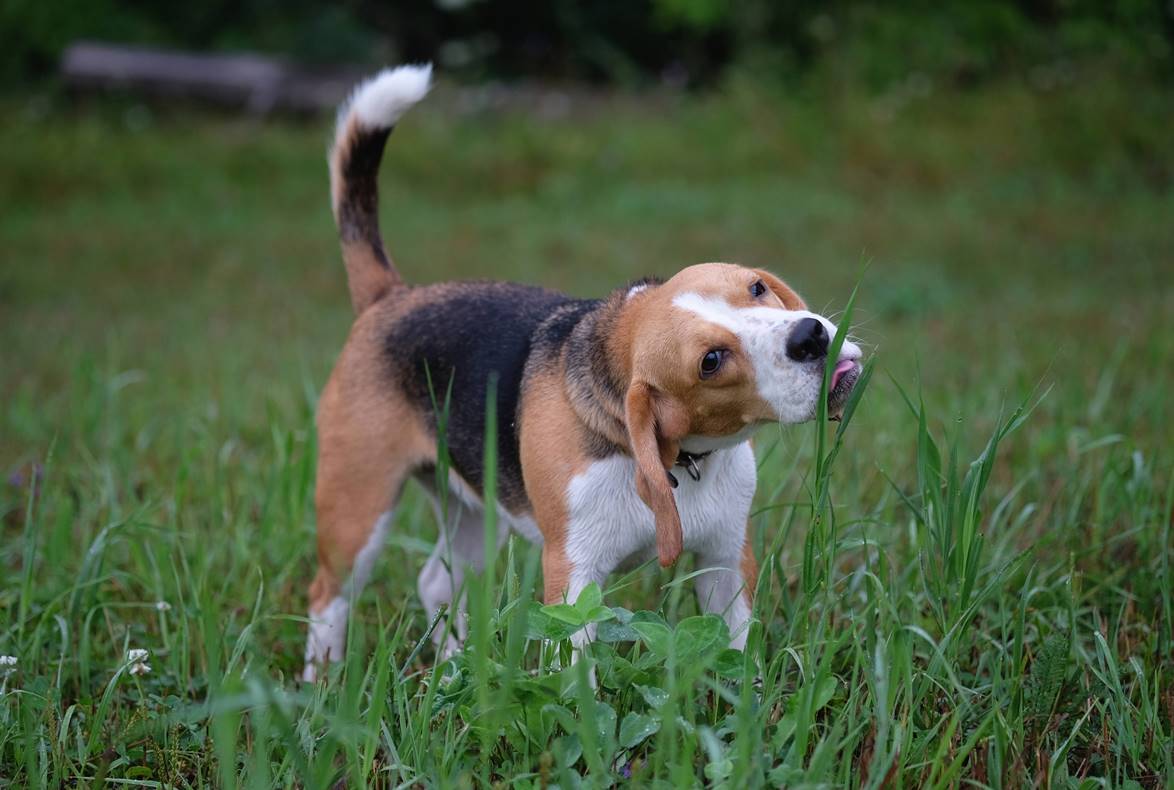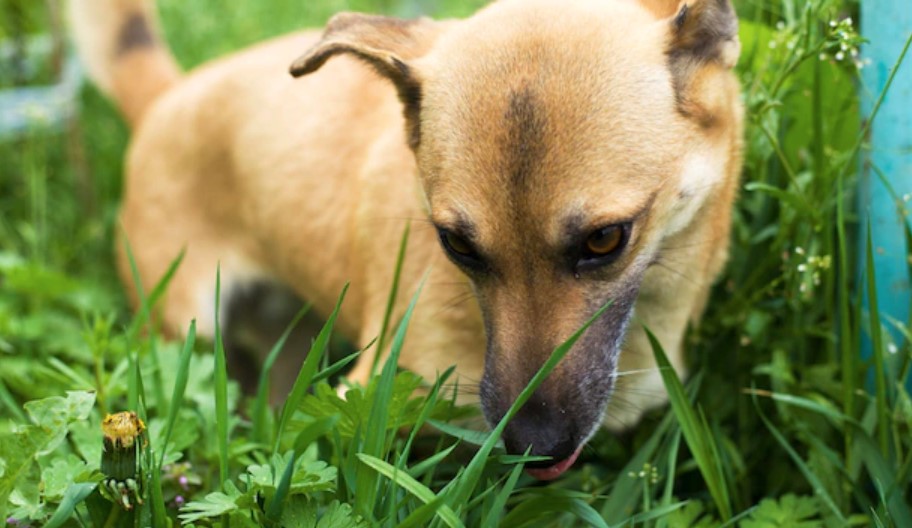If your dog eats grass sometimes, that’s completely normal. Most dogs exhibit this behavior. How often and how much grass a dog eats varies from animal to animal. In this article, you can read why dogs eat grass and what you should consider.
Why do dogs eat grass?

Regular eating of grass is a natural behavior for dogs. Every puppy learns to eat a few blades of grass from its mother every now and then. Wolves show the same behavior in the wild. It is still not 100% clear why the animals eat grass. There are various assumptions that are quite plausible.
On the one hand, grasses contain a lot of roughage, which stimulates digestion and thus helps with digestive problems.
The explanation that dogs compensate for nutrient deficiencies by eating grass is also popular.
Dogs probably also eat grass from time to time to induce nausea. This behavior, which is also known from other animals such as cats, cleans the gastrointestinal tract. Especially in animals that clean themselves with their tongues, hair quickly gets into the stomach and eventually has to come out again. By vomiting, the four-legged friends get rid of the ball of hair and they immediately feel better.
Other explanations see grass eating as stress relief, occupation when bored, or as the absorption of scents that are used to demarcate the territory.
The fact is that eating grass is not a problem for healthy dogs and owners should definitely treat their dog to one or two plant-based snacks.
Why Do Dogs Eat Grass and Vomit?

Eating grass is used by some animal species to clean the stomach and intestines of dirt and hair, for example.
Dog Eating Grass: Potential Dangers
As previously mentioned, grass-eating in dogs is a natural behavior that usually does not cause problems. But as the saying goes? Exceptions prove the rule!
If the dog eats a lot of grass, swallows it without chewing, or vomits a lot after “grazing”, the behavior should be clarified by a veterinarian. Often the doctor will ask when and in what situations the dog eats grass. The type of weed can also be revealing in some cases.
Is grass dangerous for dogs?

Normal grass consumption is not a concern for healthy dogs. Animals have natural instincts about how much they can take. However, if weed consumption increases significantly, a veterinarian should be consulted.
If there are traces of blood in the vomit or stool, the stool is very slimy, or the dog is having trouble doing its business, a veterinarian should be consulted. In some cases, excessive eating of grass can lead to inflammation in the stomach or intestines. In the worst case, it can also result in an intestinal obstruction.
Another danger of eating grass is lungworm. These nest as larvae in intermediate hosts. These are often small snails sitting on the grass. If a dog eats such snails, the risk of lungworms nesting in the dog and causing pathological symptoms increases. In addition to cough and fever, other breathing difficulties and drops in performance are typical.
Dog eats grass: what can you do about it?
If your dog eats a lot of grass, you should limit and stop it as a first step. But that’s not all, because you can’t have your dog constantly under observation. Therefore, it is important to clarify with a veterinarian why the dog eats a lot of greens. If stomach problems, indigestion, or nutrient deficiencies are the cause, these can be treated relatively easily. Then you will quickly notice that your dog no longer has such a strong need to eat grass.
What is wrong with the dog when it eats grass?

Dogs eating grass can have a variety of causes. There are many conceivable causes, from a lack of nutrients, metabolic problems, and poor digestion to boredom and stress.
You should also make sure that your dog gets enough food and variety and does not start eating grass out of hunger or boredom.
If everything has been clarified and the dog only eats a normal amount of grass, there are still a few things to consider. For example, blades of grass that grow on busy roads should not be eaten. These can be contaminated by traffic. Blades of grass that are too sharp are also not suitable. You know from yourself that some stalks are so sharp that you cut your finger open. You wouldn’t want to imagine that in the dog’s digestive tract. Soft grasses are therefore the better choice in this case.





























